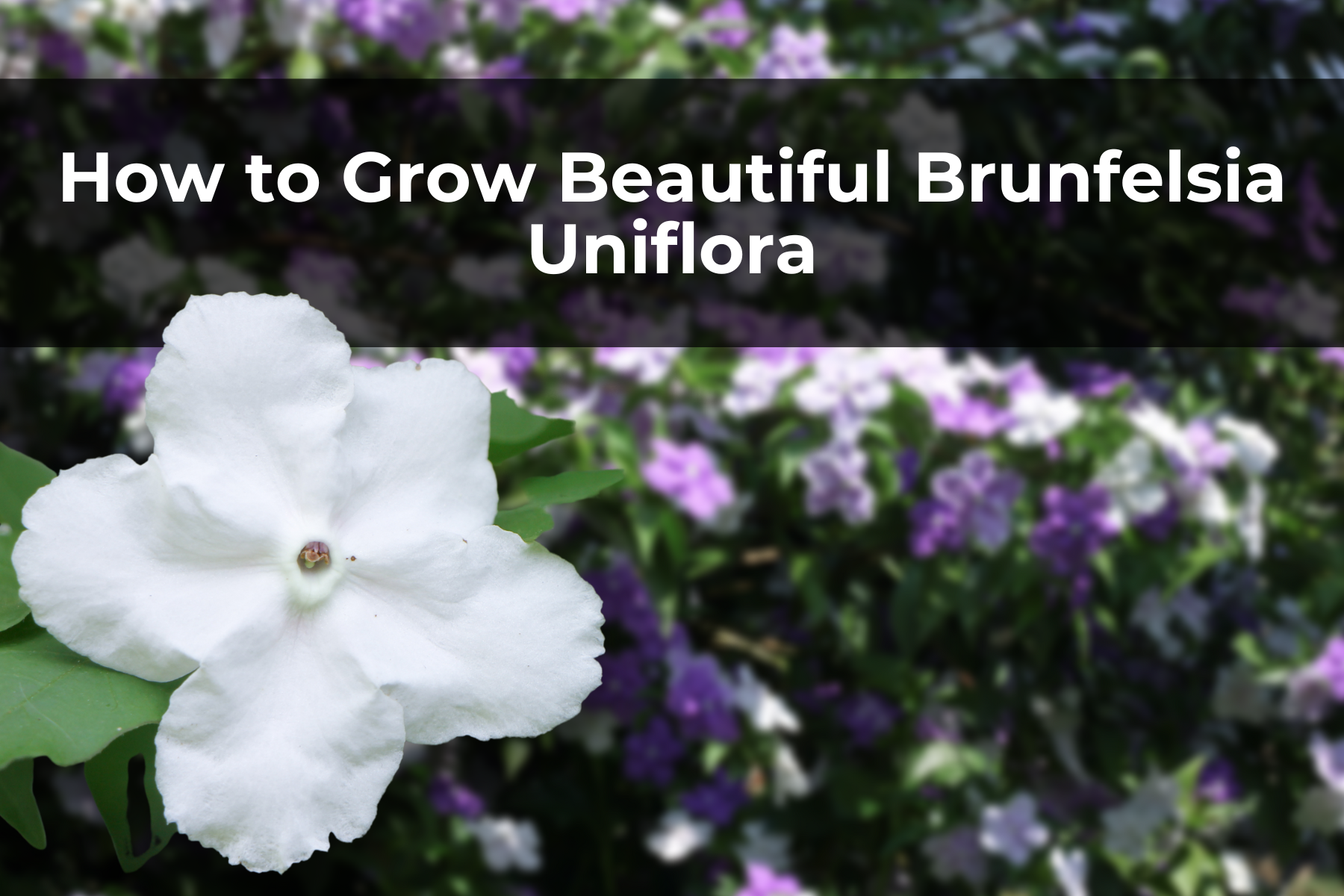Last Updated on June 12, 2023 by Real Men Sow
The Brunfelsia Uniflora or yesterday-today-and-tomorrow plant might be one of the longest plant names there is, and the name fits for more than one reason. They change in color every day, beginning as purple and then becoming lavender. As they age, they become white.
This tropical evergreen shrub can keep its flowers in bloom for a long time. It will begin to produce its fragrant, showy flowers after the first heavy spring bloom. If it likes the location, it can also produce more in the fall. Brunfelsia cannot be grown outside in cooler climates. It must be kept indoors during winter.
General Care for Brunfelsia Uniflora
Brunfelsia Uniflora can be grown in your garden if the climate permits. Even if it can only be grown in a container it still requires very little maintenance.
Light
In its natural habitat, yesterday-today-and-tomorrow grows in light woodland and thickets with partial shade where it is protected from the scorching sun. Brunfelsia can be planted under tall conifers, which will give it enough space to grow to its maximum height.
Soil
The soil should be nutrient-rich, acidic, and moist.
Water
Brunfelsia Uniflora can be grown outdoors or indoors in containers. It is important that the soil remains moist, but not soggy. You should water the soil as often as you need and don’t let it dry out. It is important to check potted plants daily, especially in the summer. The indoor plants will go dormant in winter and require less water. You need to reduce watering.
Temperature and Humidity
Brunfelsia Uniflora, a tropical plant, is able to thrive in humid environments.
Fertilizer
Test the pH around an outdoor Brunfelsia Uniflora before you apply any fertilizer. Apply liquid fertilizer to acid-loving plants, but only half the strength as indicated on the fertilizer label. It is always a good idea to apply an acidic mulch, such as pine needles or peat moss, to ensure that the soil pH is within the desired range. This will prevent your leaves from turning yellow.
Container plants require more fertilizer so they should be fed approximately every two weeks during growing season. Then, stop fertilizing them in winter and start fertilizing again in early spring.
Pruning Brunfelsia Uniflora
Brunfelsia Uniflora can grow slowly so pruning is not necessary. To encourage bushiness and give the mounded plant a cleaner appearance, take out all the flowers that have been smashed and trim the stem. Pruning is essential when growing plants in containers. This will ensure that the plant stays at an acceptable size. After the plant has finished blooming, cut off all stems to about half.
Repotting the Brunfelsia Uniflora
When grown in containers, the yesterday-today-and-tomorrow requires regular repotting. Check the root system in the spring to make sure it is fully rooted. If it does, plant it in a bigger pot with a fresh potting mixture.
Overwintering
You should ensure that the plant gets at least three to four hours of sunlight each day if it is brought indoors during winter. The plants can be placed on water-filled trays filled with pebbles to increase their humidity.
Common Pests/Diseases of Brunfelsia Uniflora
Aphids may weaken plants by sucking their sap. They can usually be washed off with water unless there is an infestation. There are no known common diseases or pests other than aphids. Brunfelsia can also be used to repel deer.

